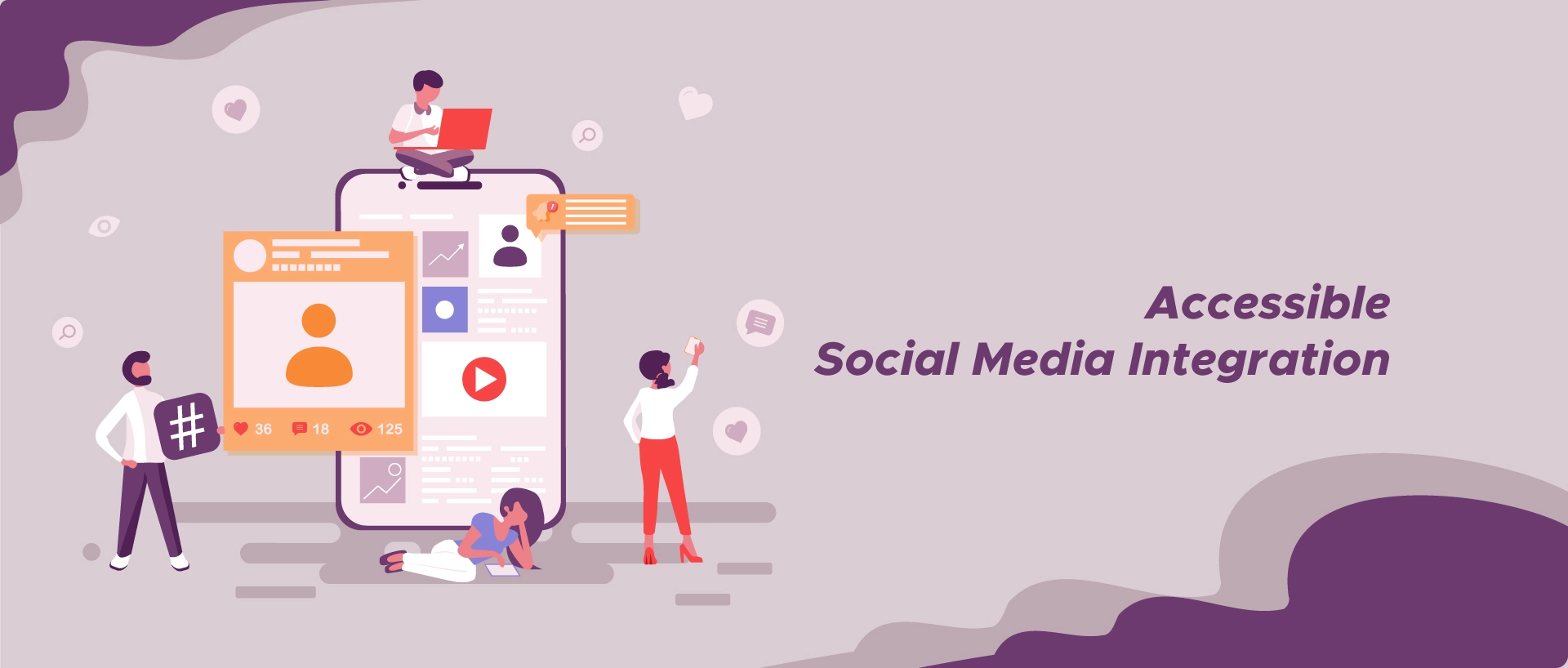
Advancements in the digital world have made social media integration essential for connecting people and sharing information. For example, a news website allows its users to share their articles or photos on social media platforms like Facebook, X (formerly Twitter), WhatsApp, etc – that's social media integration on the job.
Building inclusive sharing is like opening the door for all at a digital party. It is not about letting people in, but what it focuses on is totally about welcoming all users. Regardless of how digital users operate the internet. People with different backgrounds, abilities, and preferences should be able to join the conversation going digitally.
Let's explore the accessible social media integration guidelines. We will also discover some essential parts of accessible social media integration. It isn't about technology; it's about making the online experience a friendly and accessible experience for all.
Read on to discover the secrets behind creating digital places that are accessible and inclusive for all. A place where people can share things easily and digital doors open wide for each and every one of us.
Social media platforms are unpopular yet powerful tools for making connections, sharing information, and building communities. However, when users with disabilities encounter inaccessible content, it can become a roadblock to better understanding and effective participation. To ensure inclusivity, these accessible social media integration guidelines hold the power to make your digital content accessible to all.
WCAG 2.0 Compliance
The Web Content Accessibility Guideline or WCAG provides a solid foundation for content accessibility. As social media platforms have their accessibility features, complying with WCAG guidelines expands compatibility with assistive technologies.
Keep a note of this essential social media accessibility checklist. Try to abide by these guidelines to make your digital media accessible to all.
You can take advantage of the trusted website accessibility solutions to make your websites and social media accessible and inclusive for all.
Complying with the accessible social media integration guidelines can be helpful for various reasons. Let's understand each one by one.
These guidelines make it possible for anyone to participate in the online conversation. These recommendations guarantee that social media stays a welcoming environment for all users, regardless of whether they use a screen reader, have visual or hearing impairments, or experience cognitive difficulties.
For example, imagine a popular social media platform that has implemented accessibility guidelines.
A visually impaired user can navigate the site using a screen reader, allowing them to engage in conversations and access information like everyone else. Similarly, a user with hearing impairments can benefit from captioned videos and transcripts.
It ensures they can understand the content being shared. These guidelines promote inclusivity and equality, making social media a platform where all individuals can connect and participate without any barriers.
By following these guidelines, you're constructing informational bridges instead of simply creating content. Equal access to updates, information, and shared experiences should be granted to individuals with disabilities. These guidelines help to make that a reality.
For example, a person with hearing impairments can benefit from captioned videos and transcripts that are provided on social media platforms.
By following the above guidelines, content creators are ensuring that individuals with disabilities can understand the content being shared and have equal access to information. It promotes inclusivity and equality, making social media a platform where all individuals can connect and participate without any barriers.
Being inclusive is more than just a catchphrase; it's a commitment to promoting a diverse online community. These rules offer content producers the tools they need to promote inclusivity while providing all users with a feeling of community.
For example, a content creator might caption their videos or provide transcripts for their podcasts to ensure that hearing-impaired students can effectively engage with their content.
They may also use alt text for images to allow visually impaired individuals to understand the context of the visuals being shared. By following these guidelines, content creators are actively working towards creating a space where everyone feels welcome and included in the online community.
This informative guide has covered some important, accessible social media integration guidelines and checklists. Businesses can look to these measures to ensure their social media presence is inclusive and accessible to audiences globally. We have also covered why it is important to keep ourselves informed and comply with legal standards.
Building an inclusive environment for differently abled individuals is crucial to avoid inaccessibility and negative impacts on the entire community. Businesses should stay informed and follow legal standards to avoid potential legal issues and negative reputation impacts. Creating an accessible social media presence benefits individuals with disabilities and fosters a diverse and engaged online community.
Additional Resources:
https://www.w3.org/WAI/standards-guidelines/atag/social-media/
https://accessibility.georgetown.edu/digital-accessibility/social-media-accessibility/
Share